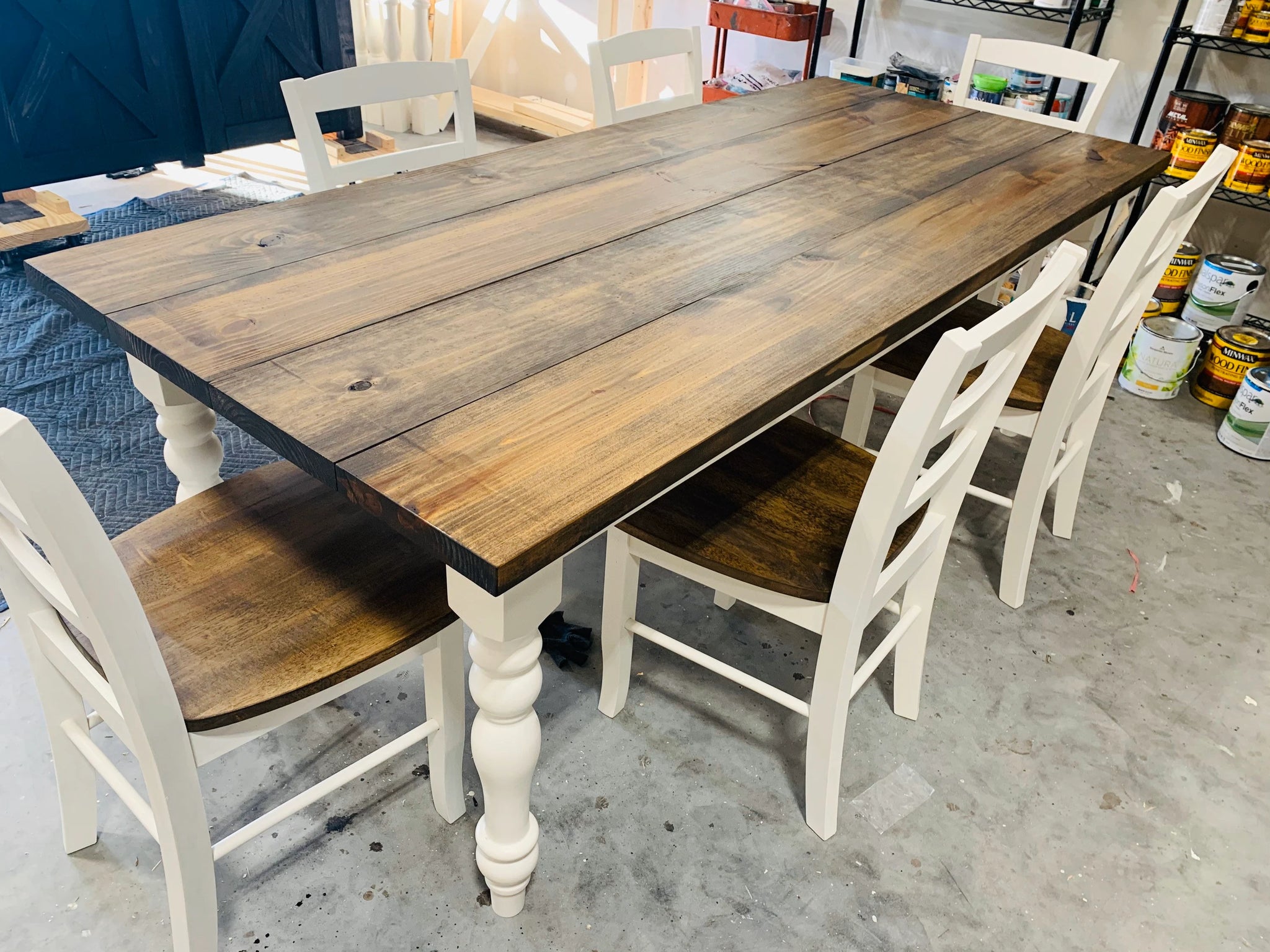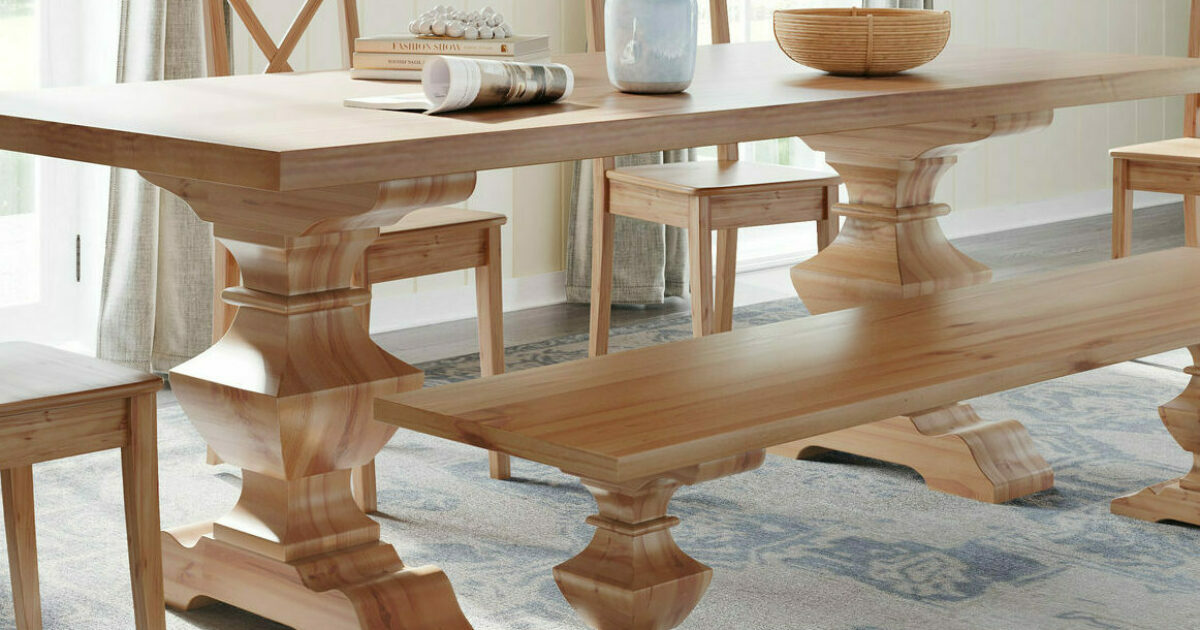Checking Out the Different Kinds Of Table Legs Wood for Your Dining Room
The option of eating table legs timber can profoundly impact both the practical and visual high qualities of your dining room. Strong wood options, such as oak and walnut, offer a traditional look with unrivaled sturdiness, while engineered wood choices offer innovative styles that resemble the splendor of all-natural grains.
Strong Timber Options

In addition, solid timber is renowned for its stamina and durability. Unlike crafted materials, solid timber is much less susceptible to warping and damage gradually when appropriately kept. This makes it a suitable option for family members or those who frequently host events. Each item of strong timber is one-of-a-kind, showcasing specific features that contribute to the appeal and personality of the table.
Furthermore, strong timber can be completed in countless methods, varying from natural oils to stained coatings, allowing house owners to customize their furniture to match their decor. In summary, selecting solid wood for dining table legs not just guarantees architectural integrity yet also improves the visual charm of the dining location, making it a worthwhile financial investment for any home.
Engineered Wood Alternatives

Plywood, built from several layers of wood veneer, is specifically strong and secure, making it an outstanding selection for dining table legs. Its layered structure enables it to withstand modifications in humidity and temperature better than standard solid timber. MDF, on the various other hand, provides a smooth surface area for painting or veneering, making it possible for developers to attain a refined appearance while preserving structural stability.
Particleboard, frequently made use of in affordable options, supplies suitable strength and is light-weight, making it less complicated to manage. It might not be as sturdy as plywood or MDF. It is important to take into consideration the intended usage and wanted visual when picking crafted timber alternatives. These products not just enhance the performance of dining rooms but also permit greater design versatility, guaranteeing that traditional and modern styles can coexist sympathetically.
Reclaimed Timber Includes
Recovered wood offers an unique blend of sustainability and character, making it a progressively prominent option for eating table legs. Sourced from old barns, manufacturing facilities, and various other structures, recovered timber personifies a history that brand-new products simply can not replicate. Each piece brings its own story, marked by unique imperfections, knots, and differing grain patterns, which add to a table's distinct aesthetic charm.
In addition to click here now its visual beauty, redeemed timber is an eco-friendly option. By repurposing formerly used products, it minimizes the need for new lumber, therefore assisting to minimize and save forests waste. This lines up with an expanding consumer choice for sustainable practices in furniture.
In addition, reclaimed timber is usually extra long lasting than freshly gathered wood because of its age. The natural drying out procedure that reclaimed wood undertakes outcomes in a denser and more powerful material, making it much less vulnerable to bending and splitting. This enhances the longevity of eating tables, permitting them to withstand the roughness of everyday usage.
Softwood vs. Hardwood
When picking eating table legs, recognizing the distinctions in between softwood and hardwood is vital for accomplishing both aesthetic and functional objectives. They generally show an even more rustic appearance, making them suitable for casual or country-style eating rooms.
On the various other hand, woods, sourced from deciduous trees like oak, maple, and cherry, are renowned for their density, stamina, and toughness. The intricate grain patterns and rich hues of woods supply a classic and sophisticated charm, making them important site ideal for formal eating setups. While hardwoods often tend to be extra pricey and much heavier, their resilience against wear and tear often validates the financial investment.
Inevitably, the choice between softwood and hardwood for eating table legs need to line up with your design vision, usage needs, and spending plan, ensuring that your dining space shows your individual style while continuing to be practical with time.

Therapies and coatings
The aesthetic appeal and durability of table legs can be considerably boosted through various surfaces and treatments. These procedures not just shield the wood from damages yet also boost its appearance, enabling it to match diverse indoor styles.
One common therapy is discoloring, which permeates the wood and improves its natural grain while adding shade. Discolorations offer an abundant, stylish appearance, allowing property owners to match their furniture with existing style. Alternatively, clear finishes such as polyurethane or varnish develop a protective layer without altering the wood's original hue, guaranteeing durability against wear and tear.
Furthermore, all-natural oils, like tung or linseed oil, nurture the wood and offer a refined luster, all while being eco-friendly. These oils enable the surface to breathe, preventing dampness build-up and possible bending.
For those looking for a rustic charm, distressed or weathered surfaces can be put on create an aged look, including character to the item. Ultimately, the choice of therapies and finishes depends on individual choice, wanted aesthetic appeals, and the particular wood kind, making it vital to take into consideration these variables when picking eating table legs for your area.
Final Thought
Strong woods, crafted alternatives, and recovered options each offer distinctive benefits, catering to various preferences and needs. Eventually, the option of timber type ought to straighten with preferred style, longevity, and ecological factors to consider, improving the overall eating experience.
The choice of eating table legs timber can exceptionally affect both the aesthetic and useful qualities of your eating room - Dining Table Legs Wood. Solid timber alternatives, such as oak and walnut, provide a traditional appearance with unequaled sturdiness, while engineered timber choices use innovative More Help layouts that resemble the richness of all-natural grains. Strong timber supplies an ageless top quality that can boost the overall layout of a dining space. Each piece of strong timber is distinct, showcasing specific qualities that include to the appeal and character of the dining table
In addition, reclaimed wood is usually much more sturdy than freshly harvested timber due to its age.